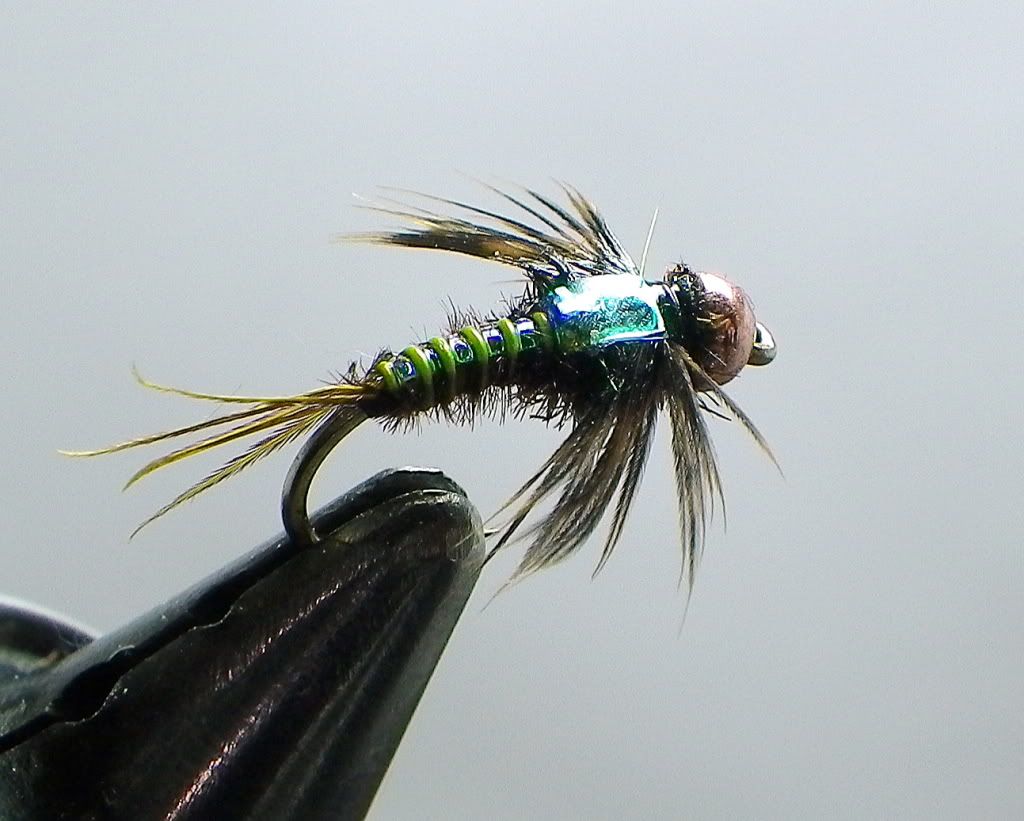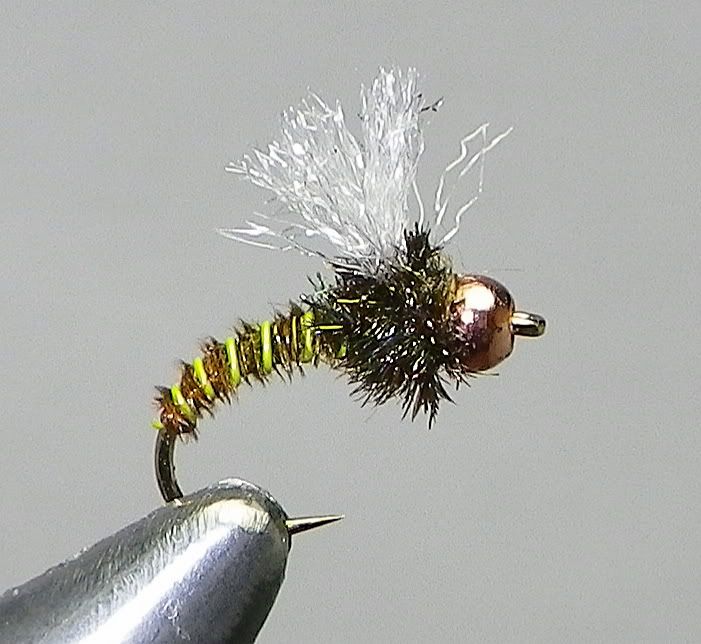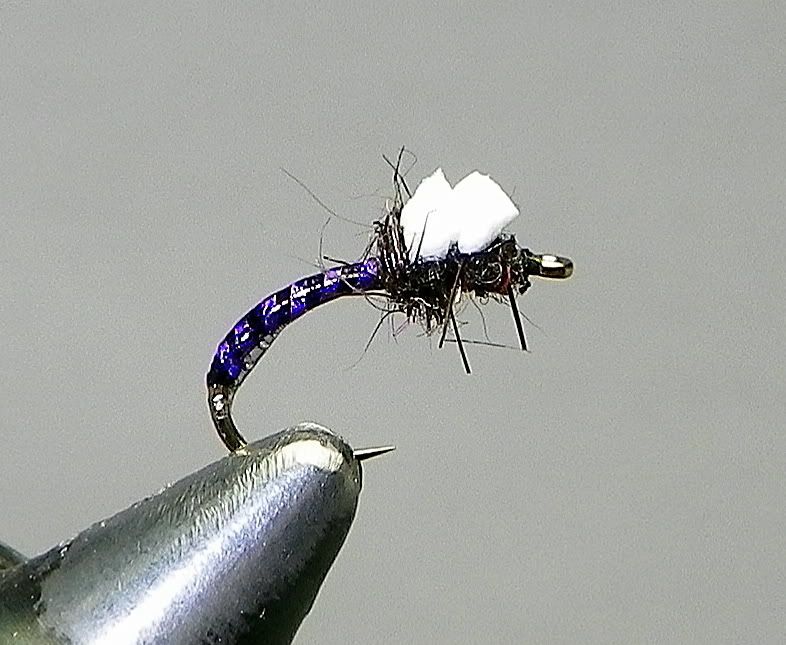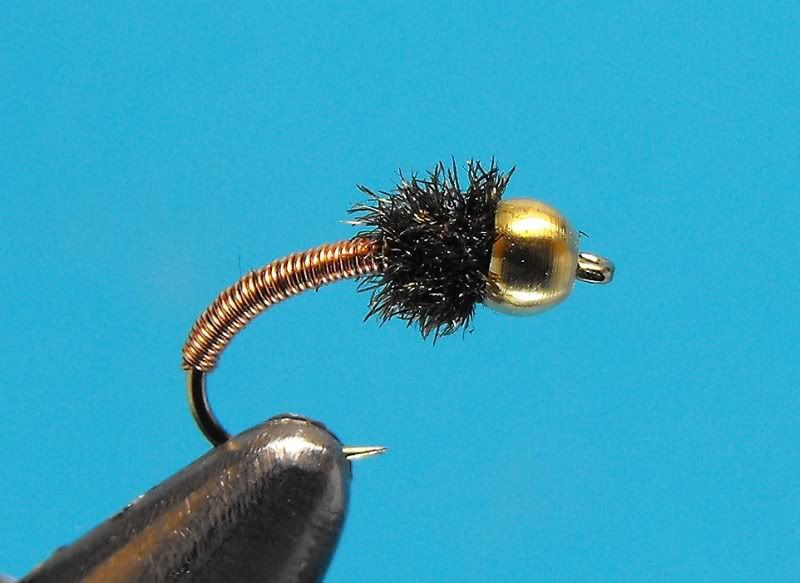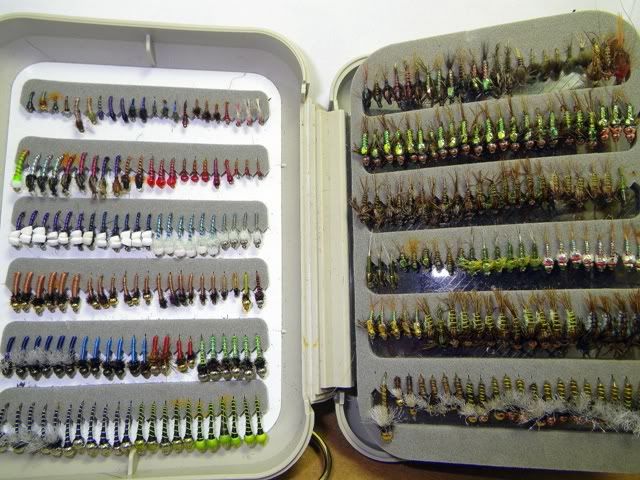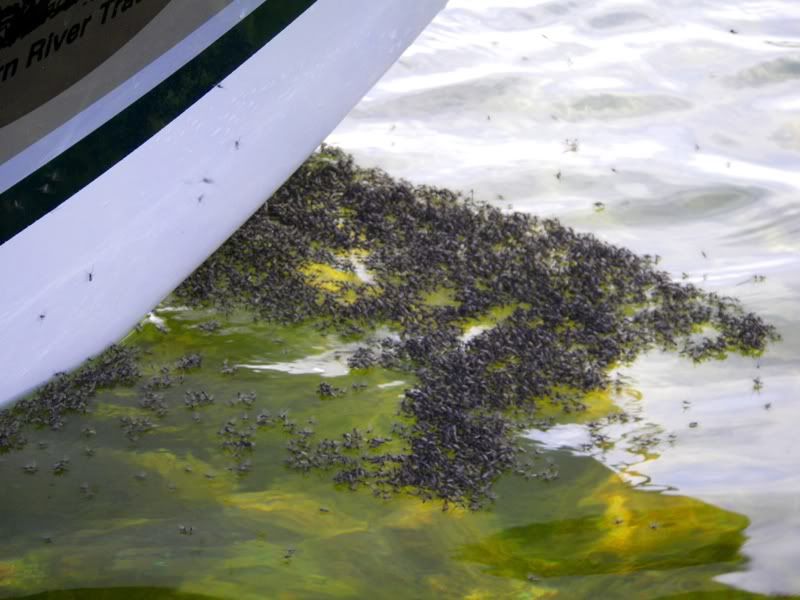A lot of different opinions and answers. That's the beauty of fly fishing - no two of us do it the same way. That being said, I will offer my opinion and explain how I do it. It must work because we catch a lot of fish doing it this way.
The setup I use is my typical nymphing rig, whether fishing with mayfly, caddis, stonefly or midge imitations I usually use this method on most moving water. The only exception would be on shallow streams and creeks.
I start with a twisted mono leader of about 9.5-feet for larger rivers and 6.5-feet for smaller streams. I usually attach my indicator where the fly line and leader meet. I prefer the small or extra-small Thingamabobbers in the glow-in-the-dark color - no, I don't fish them at night, but the smoky gray color seems less obtrusive than the brighter colors fish see all the time.
Next, I will usually tie on my favorite searching bug, an orange/yellow variegated Big Ugly Rubberlegs stonefly nymph (color to match season and prevalent colored bugs in waters I'm fishing). I tie this to the 2X tippet at the end of my leader. This fly is usually weighted thus I don't normally use any other weight such as split-shot or tungsten putty.
I then tie on about 18-inches of 5X tippet to the bend of the hook and attach a bead-head nymph usually in a mayfly or caddis pattern. My favorites are either a flashback Pheasant-tail nymph or an Improved Shop-Vac.
I then tie another 18-inch piece of 5X tippet to the bend of this hook and then attach my midge offering by using a non-slip mono loop. The knot is used often with larger flies such as streamers, but I have found it allows smaller flies to move rather than look like they are attached to a two-by-four, which gives a more natural look during the drift.
The key, like most have stated here, is to get your rig down to the bottom of the stream/river - this is especially important in the colder weather.
Some states only allow two flies and a few only one. While I use the rubberlegs fly for my weight, it would also work on a two-fly rig. If fishing only one fly, then I would recommend split shot or putty about 8-inches above your fly.
Cast up and across, mend at least once upstream and follow that indicator for any movement or hesitation. Set lightly if it stops or hesitates. If it pulls back, set again and have fun with your catch. If not, mend again and follow the drift.
If 12-o'clock were directly in front of me and the current is moving right-to-left, then I would cast to about the 2 or 3-o'clock position upstream, mend immediately, let it drift to about the 12-o'clock position, mend again, and then pay close attention, because I get most of my takes and hookups at about the 11 or 10-o'clock position downstream from my position.
I hope this helps. Correct mending will allow your flies to get the maximum dead-drift as well as allow them to get as close to the bottom as possible. If you're not hanging up on a fair amount of the drifts, then you're not on the bottom. Expect to lose some rigs, but that is the price we pay to get down to where the fish are. If the weighted top fly is not enough to get the rig down, add some shot above that fly. There is a great method of weighting nymph rigs developed by guides on the Green River in Utah that uses a drop-shot method of hanging the shot off of the bottom fly. I like any weight at the top of my rigs so all of my flies are at or near the bottom of the river.
Conventional wisdom says that we should set our indicators about 1.5 to 2-times the depth of the water we are fishing, which usually works just fine, but when fishing fairly slow currents it may pay to adjust your indicator to just a little bit deeper than the water you are fishing. Faster water requires a longer leader between indicator and flies.
Lots of different ideas. Experiment with a few and see what works best for you on the waters where you fish. Most of all, don't over think it or become discouraged. Nymphing, like any other aspects of the sport takes practice and time on the water. Have fun with it.
Here are a few of my favorite flies for the rig I explained above:
This is my favorite rubberlegs fly to use as my weighted top fly:
The Big Ugly Rubberlegs:
Bead-head, flashback Pheasant-tail nymph:
Another 2nd-fly favorite is the Improved Shop-Vac (the improved part is that I added the peacock collar at the thorax, and ribbed it with chartreuse wire):
My favorite midge pattern - KG's Deep Purple Peril Midge:
Another favorite midge pattern - Zebra midge (I also like this in brown with a gold bead and gold rib):
While the traditional Brassie is a great fly, I prefer the bead-head version in very small sizes:
Rainbow Warrior - always a good choice:
A sample of one of my boxes:
A midge 'cluster' on Montana's Big Horn River:
There is my take on your challenge, hope it helps some.
Best Fishes,
Kelly.
 . I have two midges in tandem hanging under a thingamabobber.
. I have two midges in tandem hanging under a thingamabobber. 





